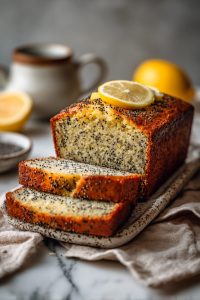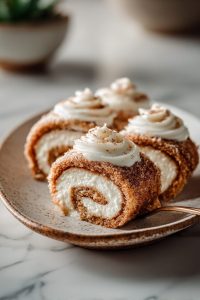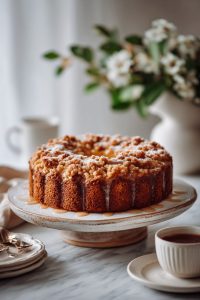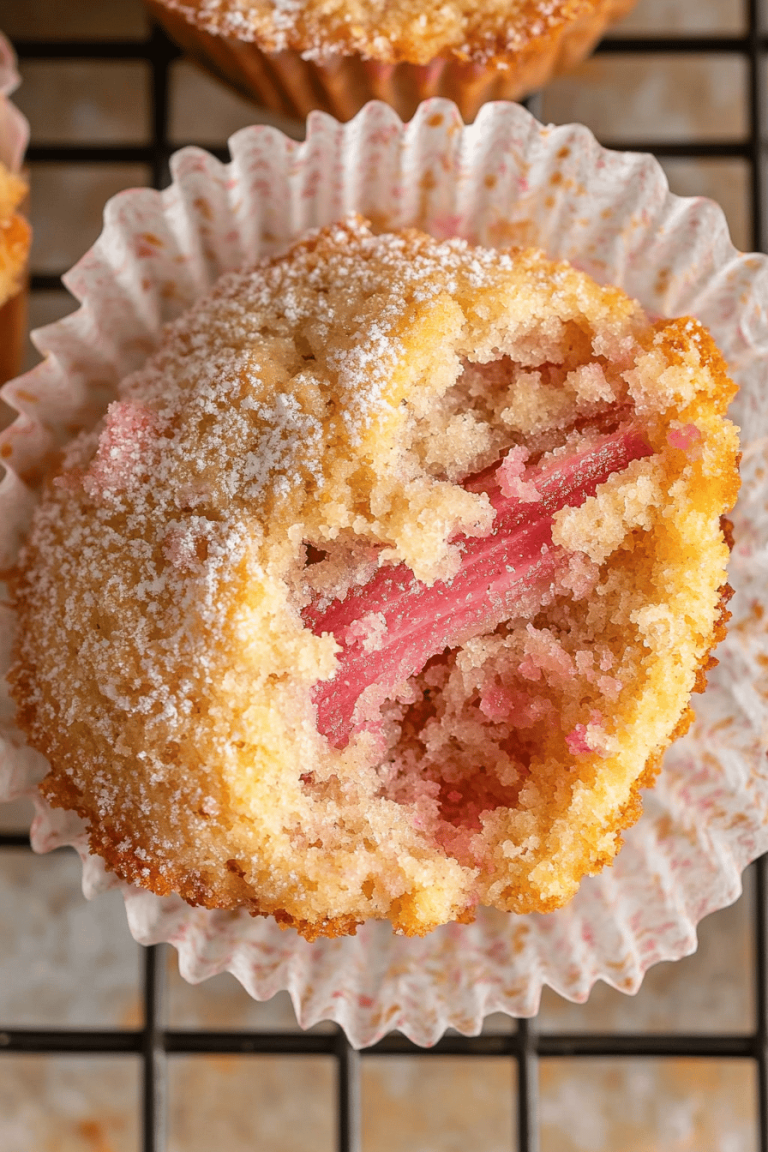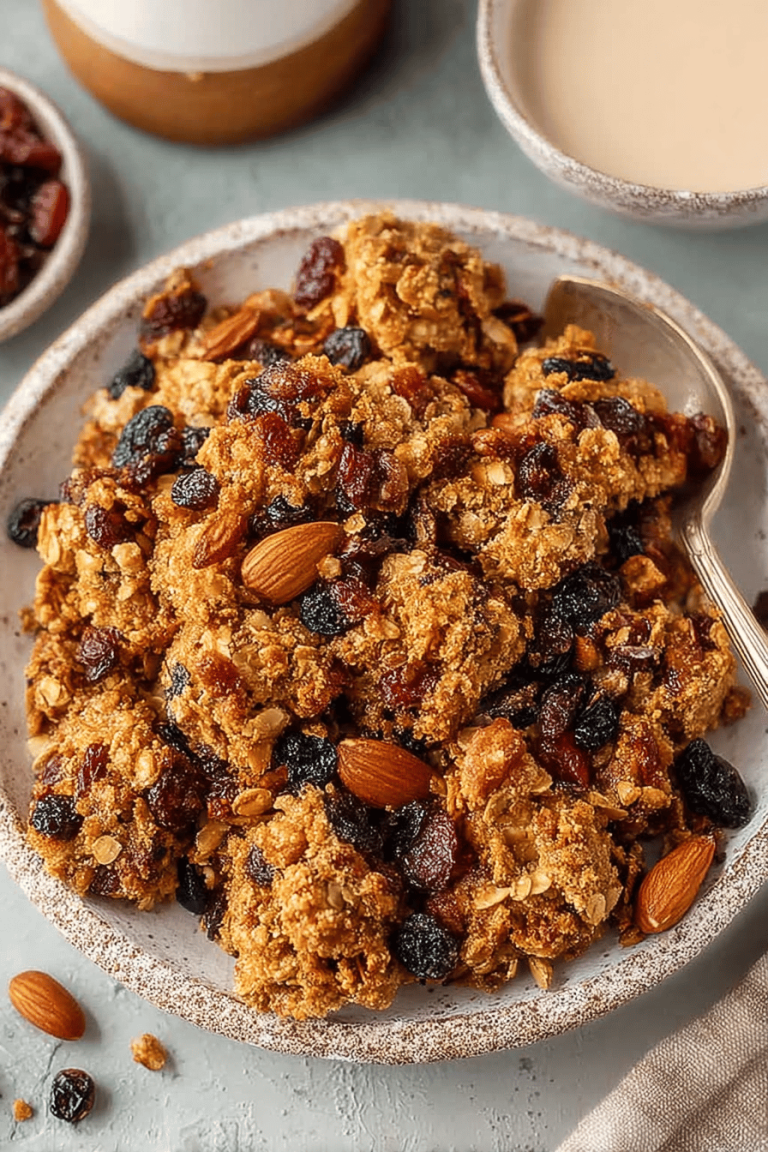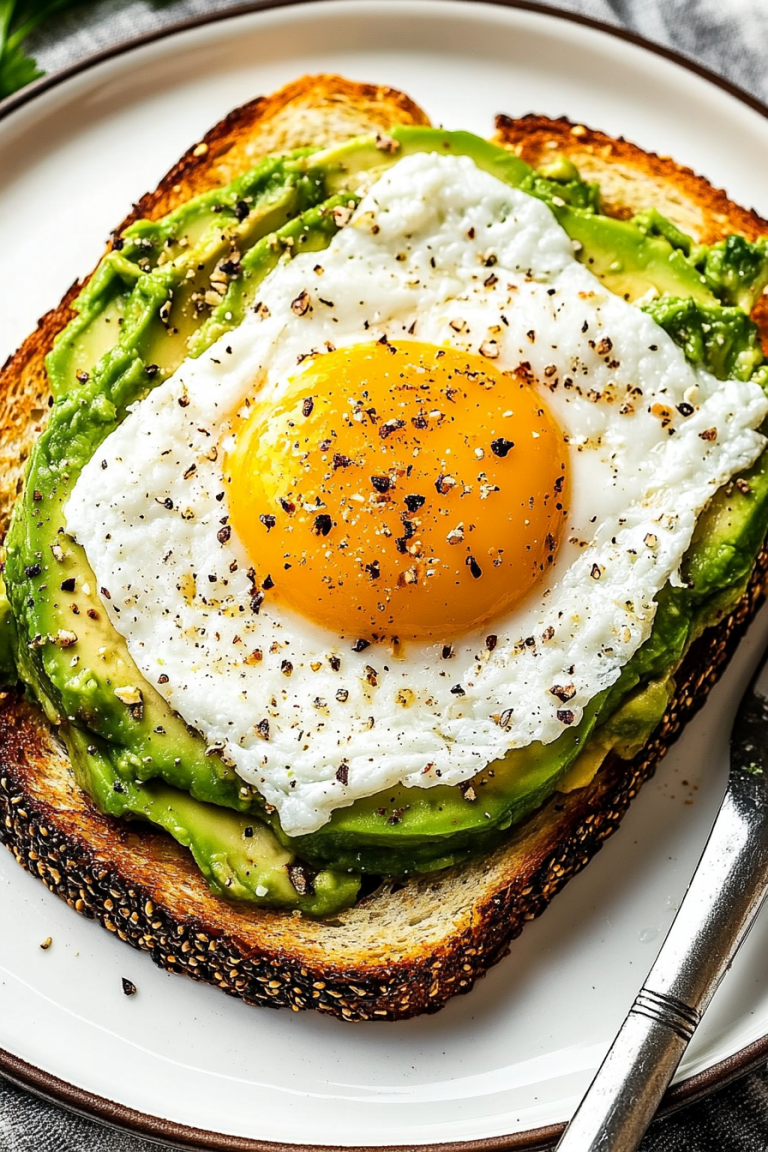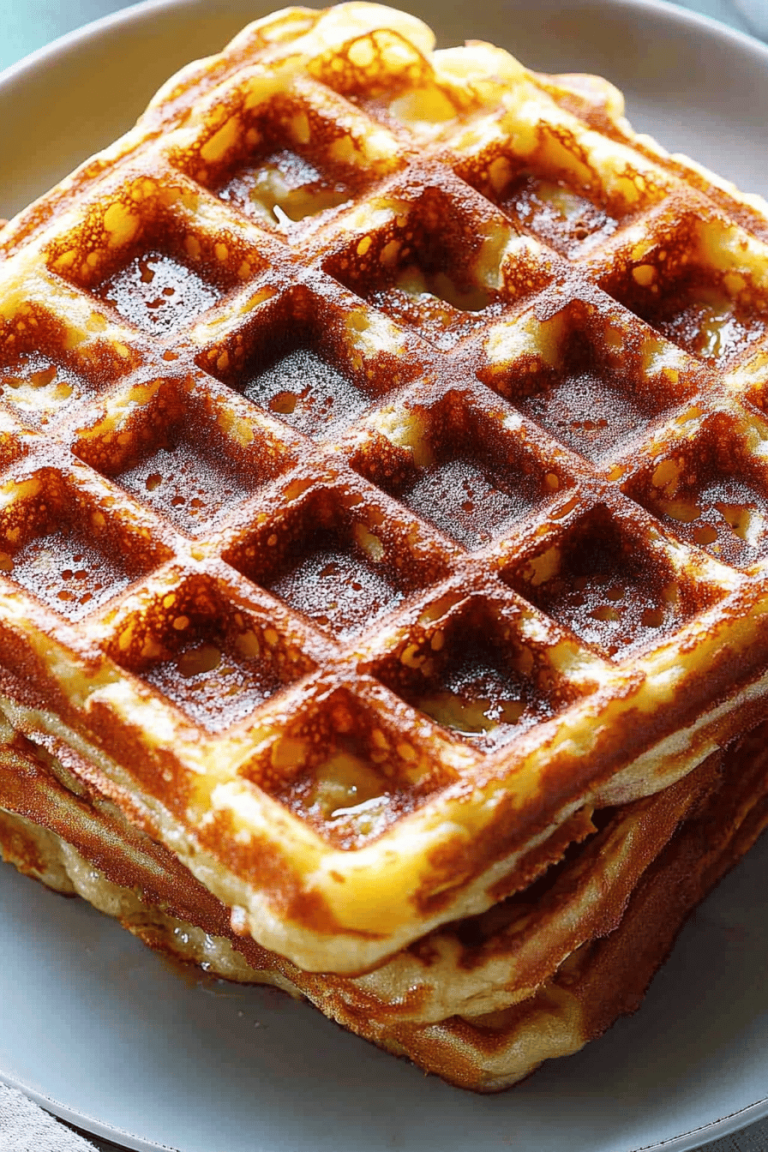Easy Easter Bread Recipe

This Easter Bread recipe is seriously the BOMB. It’s soft, it’s a little sweet, it’s got that perfect spring vibe… and it makes your kitchen smell like a bakery exploded in the BEST way. If you’re looking for something to impress the fam without spending all day in the kitchen, this is IT. Trust me, you won’t regret it.
My husband, Mark, he’s not usually a bread guy. Like, he’ll eat it, but he’s not gonna rave about it. BUT THIS BREAD? He literally hovers when it comes out of the oven. Last year, I made a double batch because my sister was coming over, and I swear, half of it disappeared before she even walked through the door. Mark was just standing there, sheepishly tearing off pieces and mumbling something about “quality control.” It’s been a tradition ever since – Easter isn’t Easter without this bread, and Mark’s “quality control” is now a family joke.
Why You’ll Love This Easy Easter Bread Recipe
- It’s surprisingly easy to make. Seriously, even if you’re a baking newbie, you can nail this.
- The smell alone is worth it. Think vanilla, citrus, and pure happiness wafting through your house.
- It’s a total crowd-pleaser. Everyone loves it, from picky toddlers to grumpy grandpa.
- Leftovers (if you have any) make amazing French toast the next day. Just sayin’.
- It looks fancy, but it’s secretly super simple. Hello, effortless Easter win!
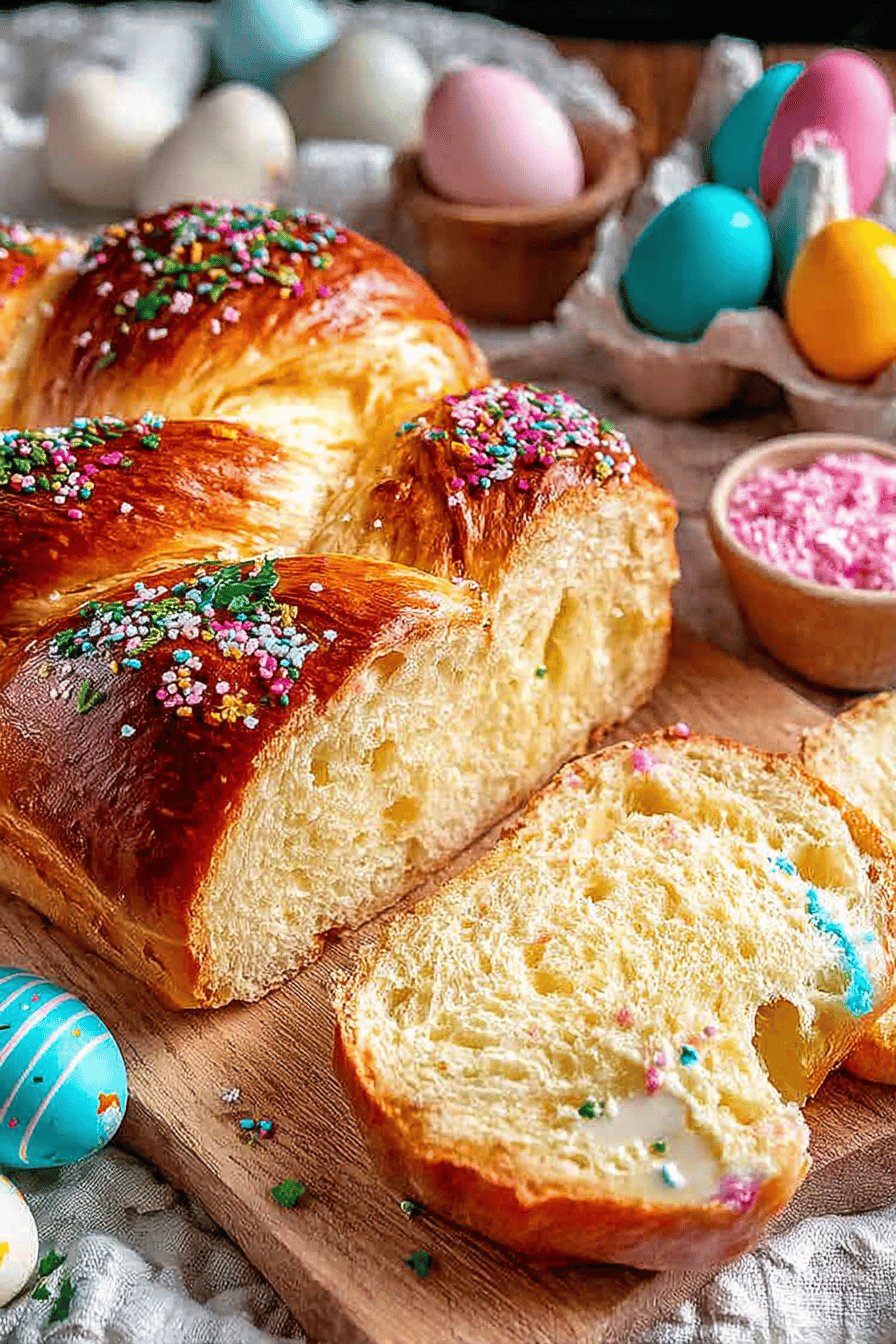
How to Make It
Alright, so first things first, you gotta proof your yeast. Don’t skip this part, okay? Warm water, a little sugar, and the yeast—let it sit for like, five minutes until it gets all foamy and weird-looking. That’s how you know it’s alive and ready to party.
Next, in a big bowl (or the bowl of your stand mixer, if you’re fancy), you’re gonna throw in your flour, the rest of the sugar, some salt (don’t forget the salt! It’s important!), and the zest of an orange and a lemon. It just gives it that extra zing that makes it taste like Easter.
MORE OF OUR FAVORITE…
Then, add your foamy yeast mixture, some milk, melted butter (not too hot, or you’ll kill the yeast!), and an egg. Now, mix it all together. If you’re using a mixer, let it knead for like, 5-7 minutes until it’s smooth and elastic. If you’re doing it by hand (you’re a champ!), knead it on a floured surface for like, 10 minutes. Your arms will thank you later.
Put the dough in a greased bowl, cover it, and let it rise in a warm place for about an hour, or until it’s doubled in size. This is where the magic happens. Don’t rush it!
Once it’s doubled, punch it down (it’s strangely satisfying), and divide it into three equal parts. Roll each part into a long rope, and then braid them together. Tuck the ends under, and place the braid on a baking sheet lined with parchment paper.
Now, this is optional, but I like to brush it with an egg wash (just an egg mixed with a little water) and sprinkle it with some sanding sugar. It makes it all shiny and pretty.
Bake it in a preheated oven at 350°F (175°C) for about 30-35 minutes, or until it’s golden brown and sounds hollow when you tap it. Let it cool on a wire rack before slicing and serving.
And that’s it! You just made Easter Bread! High five!
Ingredient Notes
[This module dynamically pulls in recipe-specific ingredients. Make sure when generating the recipe, the ingredient notes follow this tone and layout:]
- Active Dry Yeast: Gotta make sure this stuff is alive! If it doesn’t foam up in the warm water, your bread ain’t gonna rise. Trust me, I’ve learned this the hard way.
- All-Purpose Flour: I’ve tried using bread flour before, and it’s just…too dense. All-purpose is the way to go for that perfect soft crumb. Don’t skip the sifting!
- Granulated Sugar: You can use honey or maple syrup if you’re feeling fancy, but granulated sugar is classic. Plus, I always have it on hand.
- Salt: Don’t forget the salt! It balances out the sweetness and makes everything taste better. I use kosher salt, but table salt works too.
- Orange and Lemon Zest: This is what gives the bread that amazing Easter flavor. Don’t skip it! And make sure you only zest the colored part of the peel, not the white pith (it’s bitter).
- Milk: Whole milk is best for that extra richness, but you can use 2% if that’s what you have. Almond milk works in a pinch, but it might change the flavor a bit.
- Melted Butter: Make sure it’s not too hot, or you’ll kill the yeast. And don’t use margarine! Real butter is always better.
- Egg: Just one egg to bind everything together. Nothing fancy here.
- Sanding Sugar: This is optional, but it makes the bread look so pretty. You can use regular sugar if you don’t have sanding sugar. Or just skip it altogether!

Recipe Steps:
- Proof yeast in warm water with sugar.
- Combine flour, sugar, salt, and citrus zest in a bowl.
- Add yeast mixture, milk, butter, and egg to the dry ingredients.
- Knead dough until smooth and elastic.
- Let dough rise in a warm place until doubled.
- Punch down dough and divide into three parts.
- Roll each part into a rope and braid them together.
- Place braid on a baking sheet.
- (Optional) Brush with egg wash and sprinkle with sugar.
- Bake until golden brown.
- Cool on a wire rack before slicing.
What to Serve It With
Honestly, this bread is amazing on its own with just a smear of butter. But if you want to get fancy, you can serve it with:
- Honey or jam
- A dollop of whipped cream
- Fresh fruit
- A cup of coffee or tea
- A big ol’ slice of ham (it’s Easter, after all!)
Tips & Mistakes
- Don’t over-bake it! Dry bread is sad bread.
- Make sure your yeast is fresh. Expired yeast is a recipe for disaster (literally).
- If your dough is too sticky, add a little more flour, a tablespoon at a time.
- If your dough is too dry, add a little more milk, a tablespoon at a time.
- Don’t be afraid to experiment! Add different spices, extracts, or toppings to make it your own.
Storage Tips
Okay, so if you actually manage to have leftovers (which is a miracle in my house), you can store them in an airtight container at room temperature for a couple of days. Or, you can wrap it tightly in plastic wrap and freeze it for up to a month. Just thaw it out before serving. And yes, eating it cold straight from the fridge is totally acceptable. Especially for breakfast. Don’t judge me.
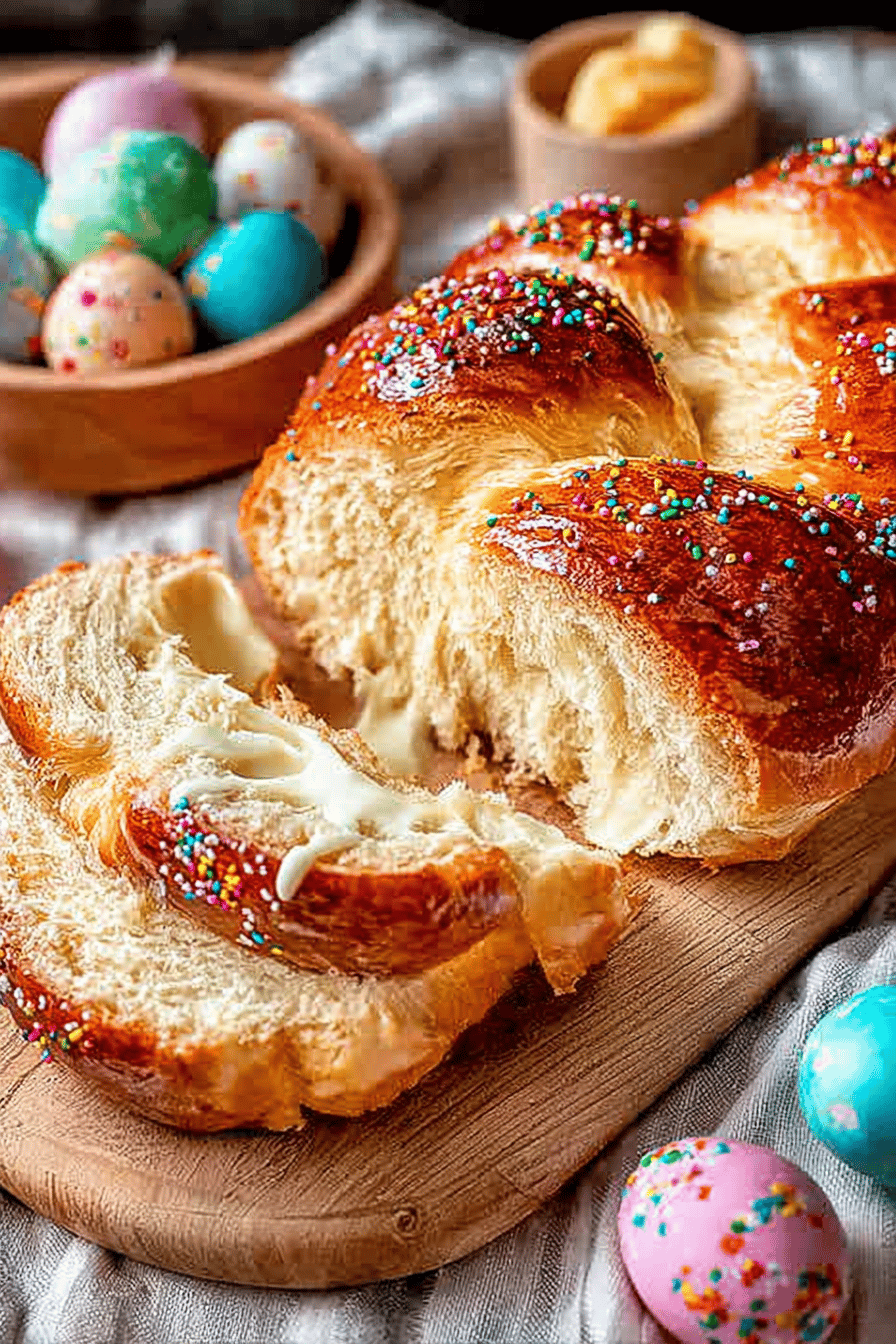
Variations and Substitutions
- No orange or lemon? Just use a teaspoon of vanilla extract instead. It won’t be quite the same, but it’ll still be delicious.
- Out of milk? Water works too, but the bread might be a little less rich.
- Don’t have sanding sugar? Regular sugar or even sprinkles will do the trick. Or just skip it!
- Want to make it chocolate? Add a couple of tablespoons of cocoa powder to the dough.
- I once tried adding chopped nuts to the dough, and it was… interesting. Not bad, but not my favorite.
Frequently Asked Questions
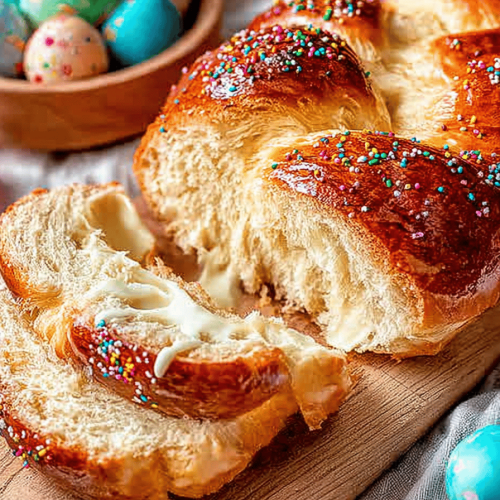
Easy Easter Bread Recipe
Ingredients
Main Ingredients
- 4.5 cups all-purpose flour plus extra for dusting
- 1 cup milk warm
- 0.5 cup sugar
- 0.5 cup unsalted butter melted
- 2.25 teaspoons active dry yeast
- 4 large eggs at room temperature, divided
- 1 teaspoon vanilla extract
- 1 teaspoon salt
- 0.75 cup raisins optional
- 1 teaspoon lemon zest freshly grated
Instructions
Preparation Steps
- In a small bowl, dissolve yeast in warm milk. Let stand until creamy, about 10 minutes.
- In a large bowl, combine the flour, sugar, and salt. Stir in the yeast mixture, butter, 3 eggs, and vanilla. Mix well until a soft dough forms.
- Knead on a floured surface until smooth and elastic, about 8 minutes. Add the raisins and lemon zest, if using, and knead until evenly distributed.
- Place dough in a greased bowl, turning once to grease the top. Cover and let rise in a warm place until doubled, about 1 hour.
- Preheat oven to 350°F (175°C). Punch down the dough and divide into three pieces. Roll each piece into a rope and braid them together. Place the braid on a greased baking sheet.
- Beat the remaining egg and brush over the loaf. Bake in preheated oven for 30-35 minutes, or until golden brown and sounds hollow when tapped on the bottom.
Notes
Featured Comments
“Made this last night and it was absolutely loved. Loved how the bite-sized came together.”
“Impressed! Clear steps and so flavorful results. Perfect for busy nights.”
“Made this last night and it was will make again. Loved how the nourishing came together.”
“Impressed! Clear steps and so flavorful results. Perfect for busy nights.”
“Made this last night and it was absolutely loved. Loved how the creamy came together.”
“Impressed! Clear steps and absolutely loved results. Perfect for busy nights.”
“New favorite here — absolutely loved. speedy was spot on.”
“Super easy and absolutely loved! My family asked for seconds. Saving this one.”
“New favorite here — so flavorful. warm was spot on.”
“Made this last night and it was family favorite. Loved how the light came together.”


